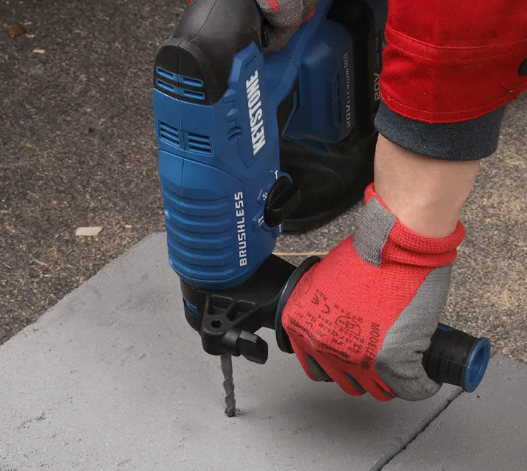A rotary hammer is a specialized tool that combines rotational drilling with a powerful hammering action, making it more effective for drilling into concrete, masonry, and other hard materials.
The key difference is that a rotary hammer has an internal mechanism that produces a rapid hammering motion in addition to the rotational drilling action. This allows the tool to chip away at the material being drilled, rather than just boring through it.
Rotary hammers are typically more powerful and durable than standard hammer drills, and are better suited for heavy-duty applications like installing anchors, drilling through concrete walls, or breaking up concrete.

In contrast, a standard hammer drill relies solely on an impact mechanism to provide the hammering action, without the rotational drilling. Hammer drills are generally lighter and less powerful than rotary hammers, and are more suitable for drilling into softer materials like wood or drywall. They are often used for tasks like hanging shelves or installing drywall anchors.
When selecting a power tool for a job, it's important to consider the hardness of the material being drilled.
For drilling into concrete, masonry, or other very hard surfaces, a rotary hammer is the better choice due to its enhanced hammering capability. For softer materials, a standard hammer drill may be sufficient and more maneuverable.
In summary, rotary hammers are specialized tools designed for drilling into hard, dense materials, while hammer drills are better suited for lighter-duty applications in softer materials. The choice between the two will depend on the specific requirements of the project at hand.


 English
English German
German French
French Russian
Russian Spanish
Spanish Japanese
Japanese Korean
Korean Portuguese
Portuguese Ukrainian
Ukrainian Arabic
Arabic Italian
Italian